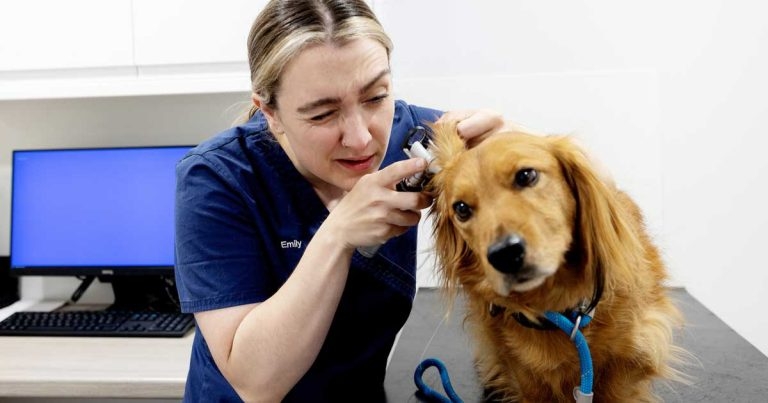2 Nov 2023
The initiative has seen the use of the study in treatment pathways for otitis externa more than quadruple during the four-year programme.

Castle Vets' head vet Emily Spencer.
A national project to increase the use of cytology in the treatment of otitis externa (OE) cases has been hailed a success.
CVS began the project four years ago and during that time, the company says use of cytology as part of the diagnostic pathway for OE has more than quadrupled in its practices.
At the start of the initiative cytology was used in just 11% of OE cases, but that figure has now risen to 54.2%.
In 2019, research on 26,269 CVS patients nationwide showed that ear cytology was only being employed in 19.2% of OE cases, reflective of the industry.
Only 11% of cases were being provided with in-house point-of-care cytology, with 8.2% having it performed externally.
In total 80.8% of patients with OE were being prescribed antibiotics without cytological support, with 5% of these the highest priority critically important antibiotics (HPCIAs).
This low level of cytology use in primary care was suspected to be a major contributory factor to the significant use of unnecessary antibiotics.
To increase intervention rates, CVS’ hub clinic lead team conducted research which identified the following barrier to performing ear cytology in OE cases:
As a second step, a minimal list of cytology equipment was developed to ensure that all sites had the right kit while a suite of educational resources was also created to upskill both vets and nurses.
Each site was then provided with its own data, so that they could monitor what they were doing individually. Practice data was also supplied monthly, supporting practice teams to chart their progress.
Elizabeth McLennan Green, CVS clinical director for the north, said: “One of our goals with this project was to minimise the number of antibiotics prescribed without associated diagnostics, and to use ear cytology to guide therapy and response to treatment for the benefit of our patients and clients.”
“We know that low ear cytology interventions are an issue across the profession. We wanted to do better. So ear cytology has been our first and longest running clinical improvement project. We’re thrilled with the brilliant results our colleagues are now achieving.”